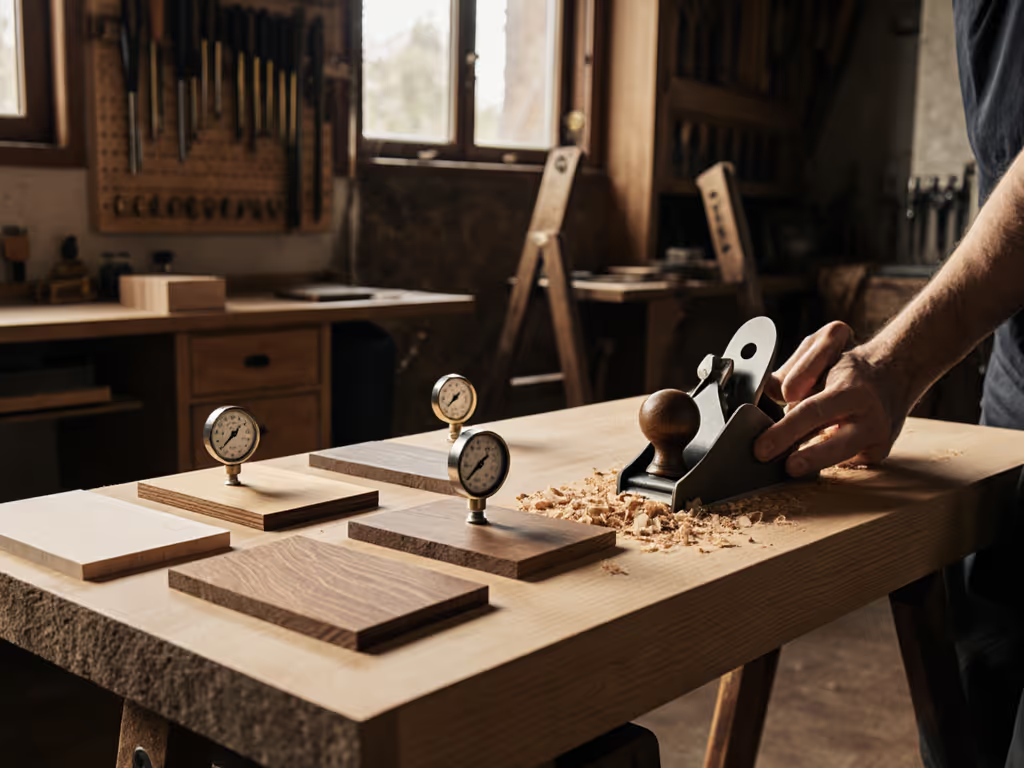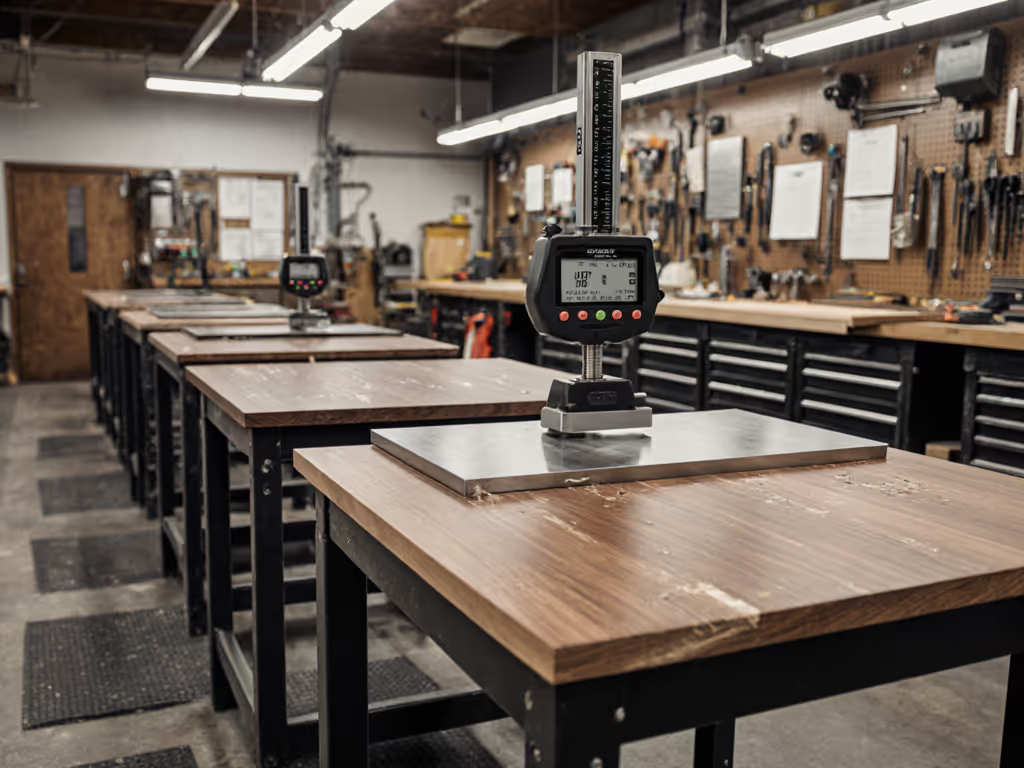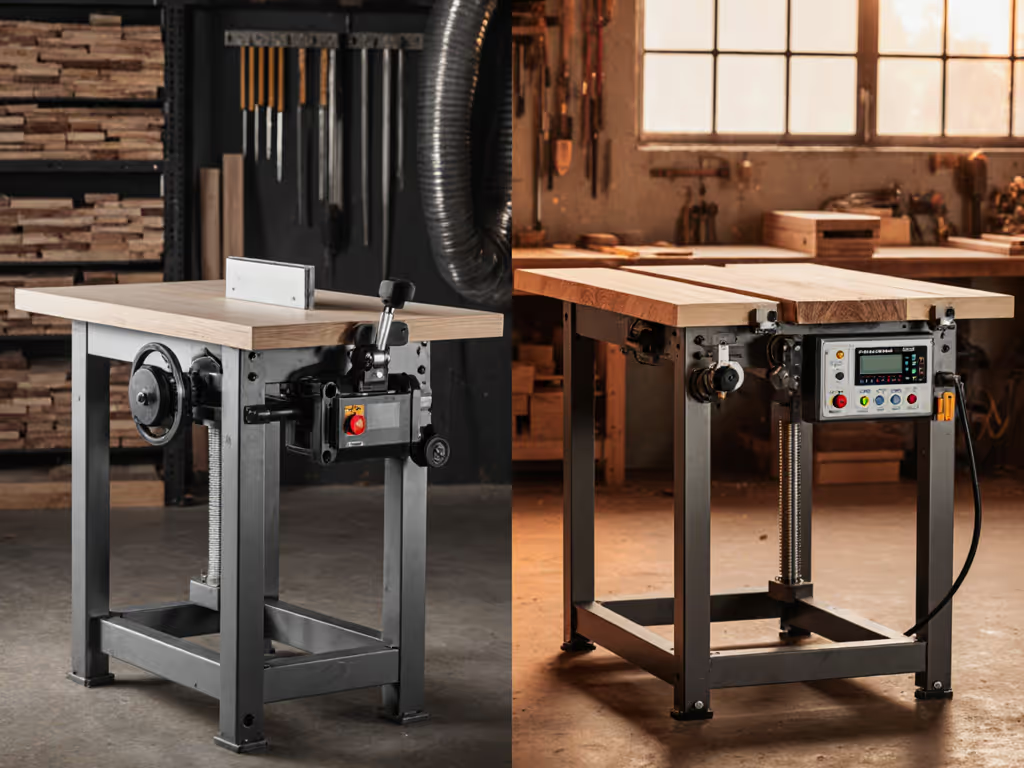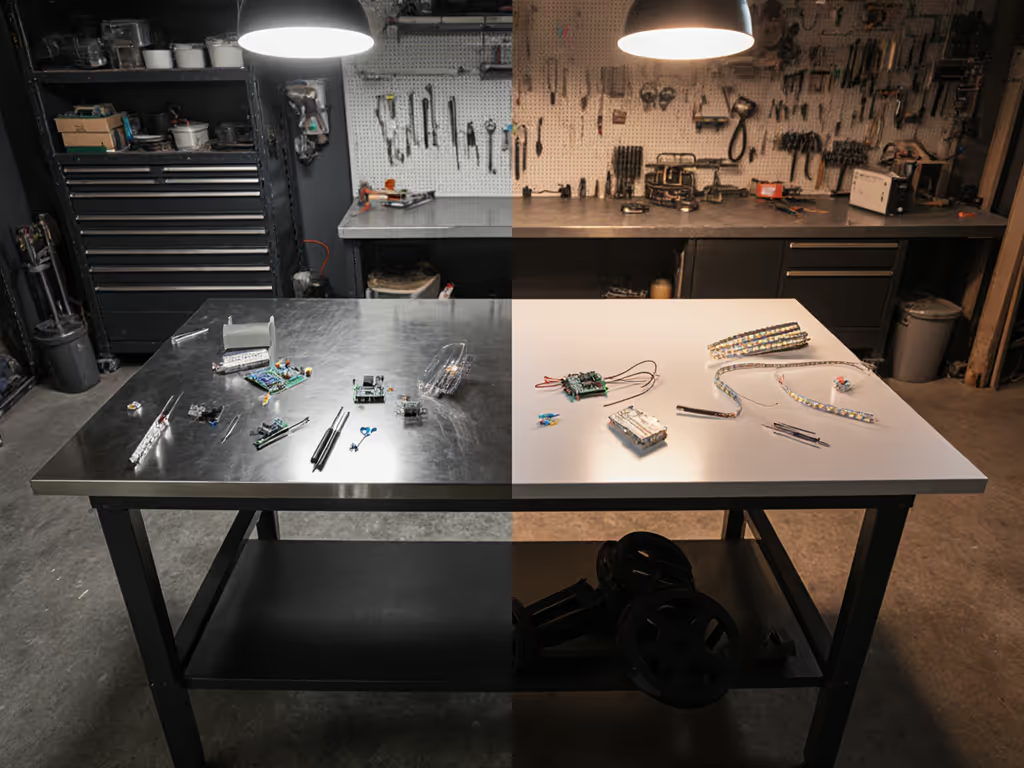
Wall-Mounted vs Freestanding Workbench: Space-Saving Stability
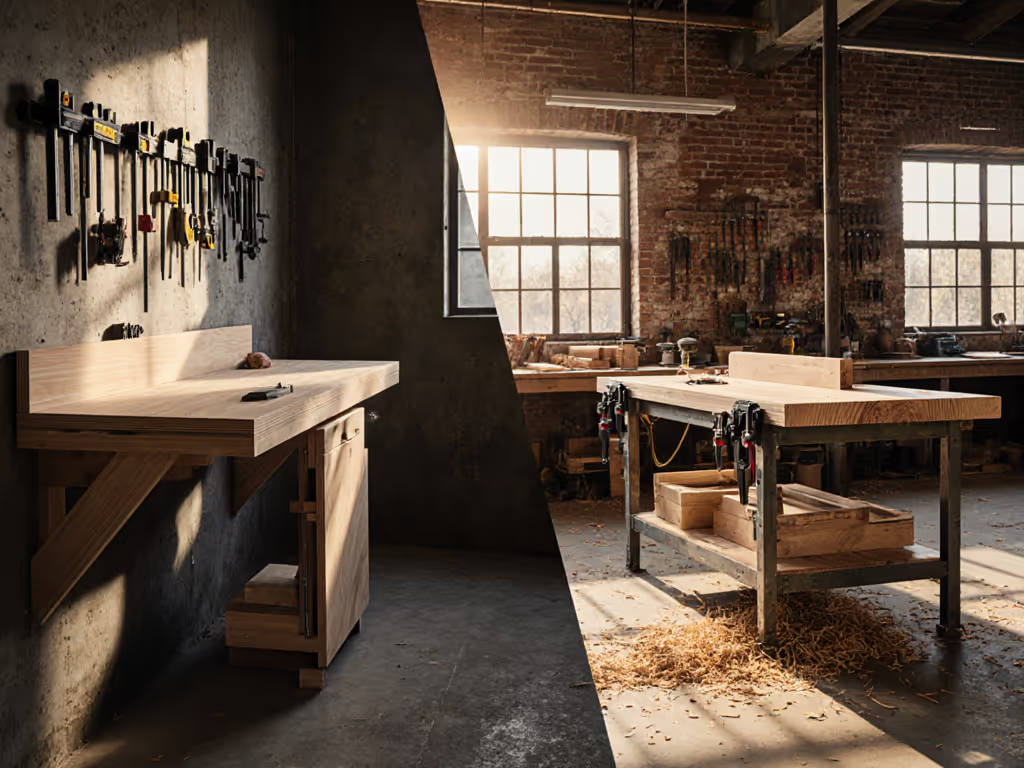
As a beginner-friendly woodworking coach, I see too many craft optimizers wrestling with the same dilemma: should they anchor their mobile workbench against the wall or go freestanding? Your core workbench woodworking setup directly impacts every project's success, from precise hand-planing to stress-free assembly. I've watched makers pour money into dream benches only to discover they're wrestling with space constraints, mobility headaches, or workflow dead zones. Let's cut through the noise with a practical, step-by-step guide to finding your perfect balance of space efficiency and rock-solid stability.
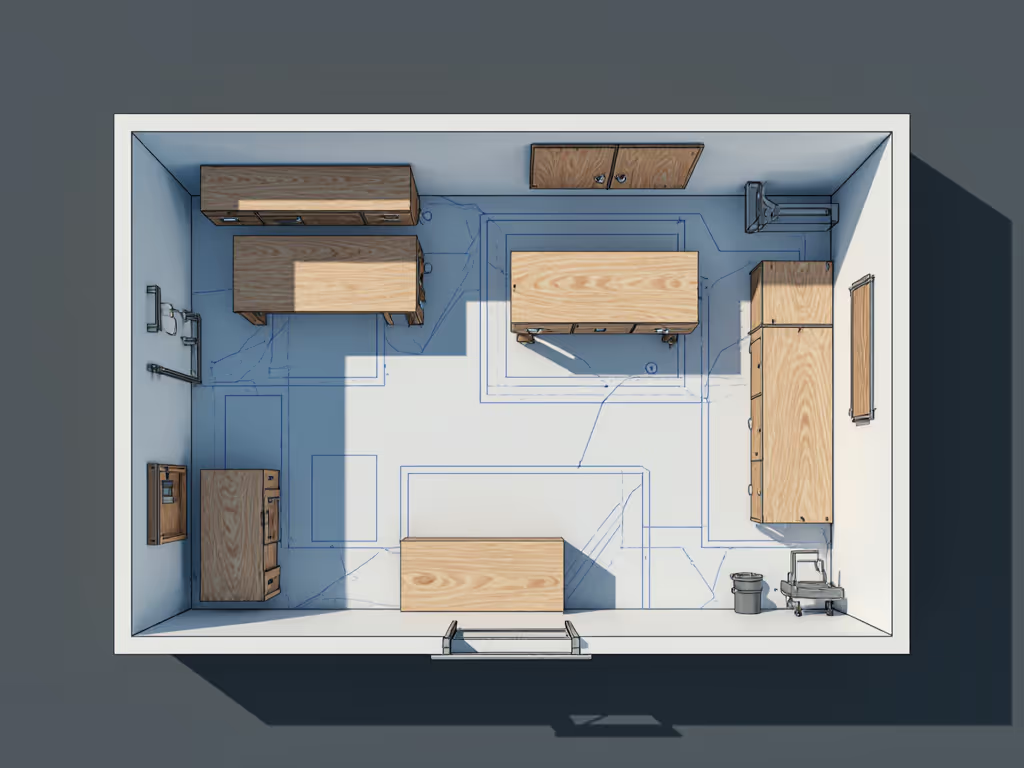
Why Your Workflow Dictates Bench Style (Not the Other Way Around)
That time I wasted hours chasing clamps buried under lumber scraps? A mentor reset my entire approach with three words: clear zones first. Clear homes end clamp hunts, and this mindset shifts how we evaluate bench styles. Wall-mounted and freestanding benches aren't just about hardware; they're workflow foundations.
Your shop's rhythm depends on three non-negotiables:
- Access: Can you reach all sides during critical operations (e.g., clamping large panels)?
- Stability: Does it stay rock-solid during planing, chiseling, or assembly?
- Flow: Does it support your next task without rearranging half your shop?
Most beginners fixate on "sturdiness" alone. But I've seen wall-mounted benches outperform freestanding ones in tiny urban shops, and vice versa in sprawling garages. Your space and workflow habits determine what "sturdy" really means. Let's diagnose your needs together.
Step 1: Audit Your Shop's Physical Reality
Before choosing bench style, run this quick checklist. Grab a tape measure and notebook. This takes 10 minutes but saves months of frustration.
✅ Space Mapping Worksheet
| Measurement | Critical Threshold | Your Space |
|---|---|---|
| Floor space available | ≥ Bench footprint + 36" clearance | _______ |
| Ceiling height | ≥ Bench height + 6" for overhead access | _______ |
| Wall integrity | Solid studs (for mounting) or clean floor space | _______ |
| Primary workflow zone | Must accommodate your tallest project | _______ |
"A bench that's too big for your space creates motion waste. A bench too small forces compromises that ruin precision." - Aisha's core belief, proven in 200+ coaching sessions
Red flags for wall-mounted benches:
- Bowing or plaster walls (common in rentals)
- Shared walls with living spaces (hammering vibrations travel)
- Frequent task switching (e.g., switching from hand tools to finish sanding)
Red flags for freestanding benches:
- Less than 72" x 72" dedicated floor space
- No fixed reference points (e.g., drill press anchored to floor)
- Urban micro-shops where every inch must multitask
If you're nodding at 2+ red flags, skip straight to Step 3. We'll tackle mobility solutions.
✅ Load-Bearing Reality Check
Wall-mounted benches look space-efficient but transfer stress to your structure. Test your wall:
- Knock firmly along the mounting line, hollow sounds mean weak support
- Check for electrical/plumbing behind walls (use a stud finder with AC detection)
- Critical: If mounting near doors/windows, structural framing is often absent
Freestanding benches avoid this but can introduce floor flex if not weighted properly. Place a level across your proposed footprint. If it wobbles, add leveling feet or a plywood subfloor.
Step 2: Match Bench Type to Your Primary Work
Not all woodworking demands the same bench. I use this decision tree with beginners:
When Wall-Mounted Actually Wins
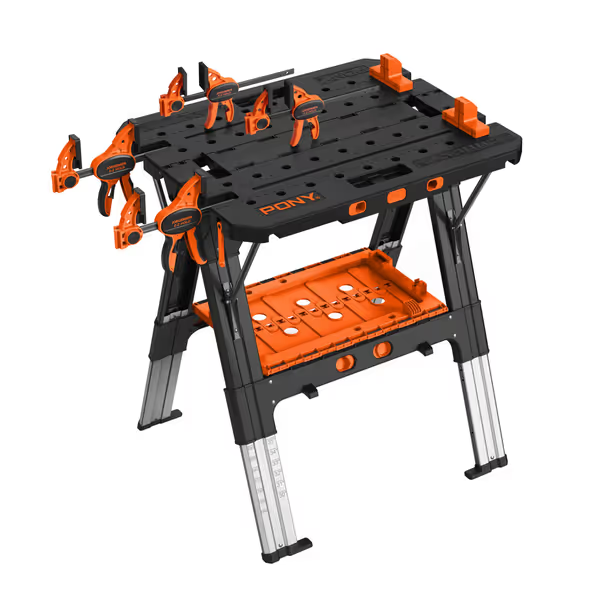
Pony Portable Folding Work Table
- Ultra-compact spaces (e.g., closets converted to shops)
- Detail work (model making, jewelry, electronics) where you rarely circle the bench
- Vertical integration (paired with wall-mounted tool storage like pegboards)
The catch: Most wall-mounted benches sacrifice clamping depth. If your vise or dog holes face the wall, you lose 30-40% of usable workholding space. Look for models with recessed toe kicks (like the Pony Portable Folding Work Table) that let you straddle the bench for full access.
Warning: Avoid "hybrid" wall-mounted benches with full-length tool trays. As one maker told me: "My tool tray became a coaster for coffee mugs, not a functional work surface." They often block legroom and create tripping hazards.
When Freestanding Is Non-Negotiable
- Furniture/cabinet building (you must access all sides during assembly)
- Heavy pounding tasks (chiseling, hammering joinery, freestanding absorbs shock better)
- Shared-shop environments (easily repositioned for group projects)
I once helped a CTE instructor convert a classroom shop by placing freestanding benches in a U-formation. Students could collaborate without fighting for wall space, and productivity jumped 40% in their next project cycle. Freestanding benches also let you add mass over time (e.g., concrete slabs under the bench) for extreme stability, something wall-mounted units can't do.
The Overlooked Middle Ground: Mobile Workbenches
If your pain points include "mobility-versus-stability tradeoff" or "space constraints", a mobile workbench can solve both. For a deeper dive into mobile workbench stability, see our guide. Key features I prioritize:
- Locking casters with ≥ 300-lb capacity per wheel
- Foldable legs (like the Pony model) that collapse flat for storage
- Height adjustability to transition between tasks (e.g., 30" for assembly, 36" for hand tools)
This isn't just for apartments. A cabinetmaker I coach uses a mobile bench as his glue-up station. He rolls it between his stationary Roubo bench and finishing area. His workflow gained 15 minutes per project because he stopped moving materials to the bench.
Step 3: Solving the Mobility-Stability Tradeoff
"Casters ruin rigidity" — I hear this constantly. But with modern designs, mobile workbenches can rival fixed units when you address three failure points:
🔧 Stability Killers & Fixes
| Problem | DIY Fix | Product Solution |
|---|---|---|
| Wobble from casters | Add 1/2" steel plate under bench legs | Locking casters with 5° tilt tolerance (like Seville Classics' UltraHD) |
| Flex during planing | Attach bench to subfloor via bolts | Bench with integrated mass (e.g., 30-lb steel frame) |
| Clamping distortion | Use sacrificial top skin | Replaceable MDF/composite top (as seen in top-rated models) |
The Seville Classics UltraHD Workbench nails this balance: its 126-lb steel frame resists flex, while adjustable feet let you dial out floor imperfections. At 72" wide, it's my top pick for makers who do glue-ups on large panels without sacrificing mobility. Bonus: the solid wood top accepts bench dogs and planing stops anywhere along its surface.
Space Efficiency Hacks
For wall mounted vs freestanding decisions in tight shops, implement these immediately:
- The 36" Rule: Maintain 36" clearance around freestanding benches (even if mobile). This prevents workflow collisions when circling projects.
- Tuck-and-Roll: Position mobile benches against walls only during setup, then roll them into open space for work. This frees up floor real estate instantly.
- Vertical Stacking: Pair wall-mounted benches with rolling under-bench cabinets (like the Seville Classics' accessory line). Stores clamps and supplies vertically without eating floor space.
Step 4: Making Your Final Decision Count
Now synthesize your audit (Step 1) and workstyle match (Step 2) into an action plan:
📋 Your Bench Selection Scorecard
| Criteria | Wall-Mounted | Freestanding | Mobile | Winner for You |
|---|---|---|---|---|
| Floor space available | + | – | ± | _______ |
| Noise sensitivity | – | + | + | _______ |
| Project size | Small | Large | Any | _______ |
| Task switching frequency | Low | High | Very High | _______ |
| Budget (after vises/tops) | $$ | $ | $$ | _______ |
Winner tip: If mobile wins 3+ categories, prioritize foldable workshop bench features. If wall-mounted wins, verify wall mounted bench installation compatibility first. Never assume your walls can handle the load.
Avoid These Costly Mistakes
- Ignoring future-proofing: "Will this bench support my next tool?" (e.g., bolt-on drill press requires freestanding)
- Underestimating top flatness: Warped tops ruin joinery accuracy. Look for replaceable/composite tops.
- Skipping the stability test: Shake any bench candidate at clamp height. If it wobbles more than 1/8", it's unusable for precision work.
Your Next Move
Your bench isn't just a table, it's the command center for your craftsmanship. Whether you choose wall mounted or freestanding, remember: Clear homes end clamp hunts. Start with workflow zones, then select the bench that fits, not the other way around.
I've helped hundreds of makers avoid expensive mistakes by focusing on actionable stability (not just specs). If you're stuck between options, try this: mock up your bench footprint with painter's tape. Walk through your actual workflow — cutting, clamping, assembly. Notice where you hesitate or reach awkwardly. That's your answer.

